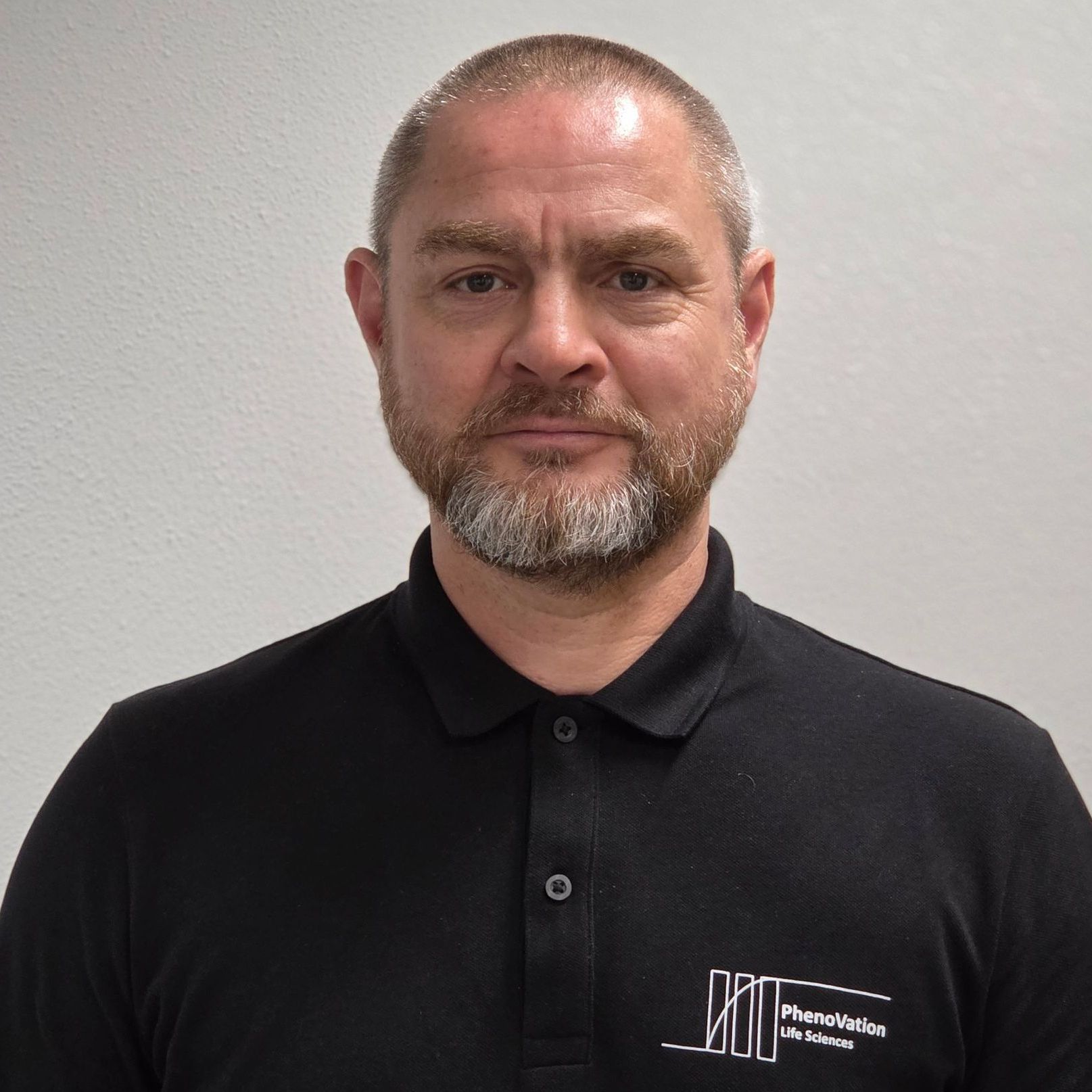SpecGrow PAR+ Sensor
The SpecGrow PAR+ is a precision spectrophotometer designed for greenhouse environments. With a spectral range from 350 to 800 nm, it captures detailed information about light intensity and quality across UV, visible, and near-infrared wavelengths.
Whether you're growing vegetables, ornamentals, or conducting plant research, SpecGrow PAR+ helps you understand how light influences your crop. From PAR and DLI to full spectral profiles, you get accurate data to optimize lighting, improve growth conditions, and make informed decisions.
Built for greenhouse conditions, it’s easy to install, integrates with climate computers, and delivers real-time data, right where and when you need it.
Specifications
| Spectral Range | 350nm-800nm |
|---|---|
| Spectral response (FWHM) | 5nm |
| Wavelenght reproducibility | +/- 0.5nm |
| Accuray | 3% in spectral range 350nm - 850nm |
| Integration time | 0.3 miliseconds up to 1 second |
| Number of pixels | 288 |
| Communication | TCP/IP- Modbus-USB C |
| Data Transfer | Automatticly via one of the above protocols |
| Power source | USB / Power Over Ethernet |
| Voltage | 12 |
| Wattage | 5 |
| Size | 120mm 100mm 70mm |
| Weight | 120 g |
| Operating Temperature | +5 - 55 Degrees Celsius |
| Operating Humidity | 0 - 95% (non- condensing) |
| Warranty | 3 years |
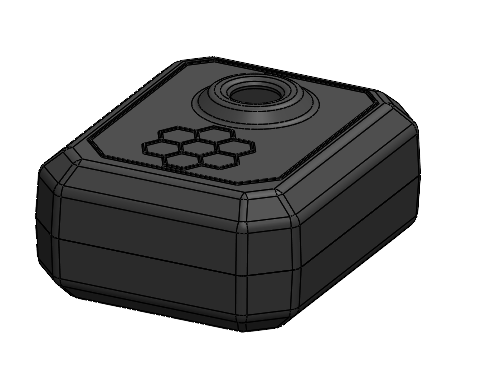
Key Features
Full Spectral Range: Measures light from 350 nm to 800 nm, covering UV-A, visible light, and near-infrared in one device.
Real-Time Output: Provides continuous, real-time data for PAR, DLI, and spectral distribution.
High Accuracy: Factory calibrated and sensor-matched to ensure <3% measurement difference between units.
Greenhouse-Ready: Designed for high humidity and temperature environments; rugged housing and IP-rated protection.
Plug-and-Play Integration: Compatible with climate control systems such as Priva, Hoogendoorn, and Ridder.
Multiple Mounting Options: Flexible installation options for hanging, boom-mounting, or fixed-frame setups.
Low Maintenance: Long-term stability and minimal recalibration needs due to robust optical design.
The chart shows a full-spectrum solar radiation profile measured with the SpecGrow PAR+ sensor. It captures light from 350 to 850 nm, including UV-A, blue, green, red, and far-red — all crucial for plant growth. The sensor delivers accurate data in μmol m⁻² s⁻¹, the standard for PAR measurements.
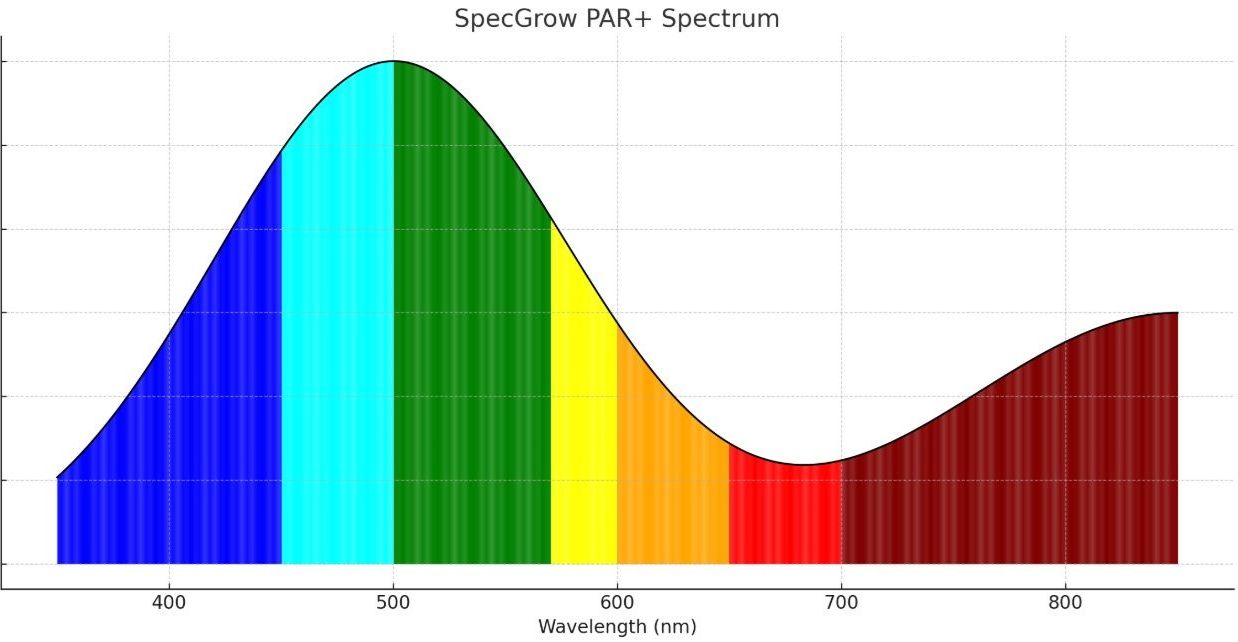
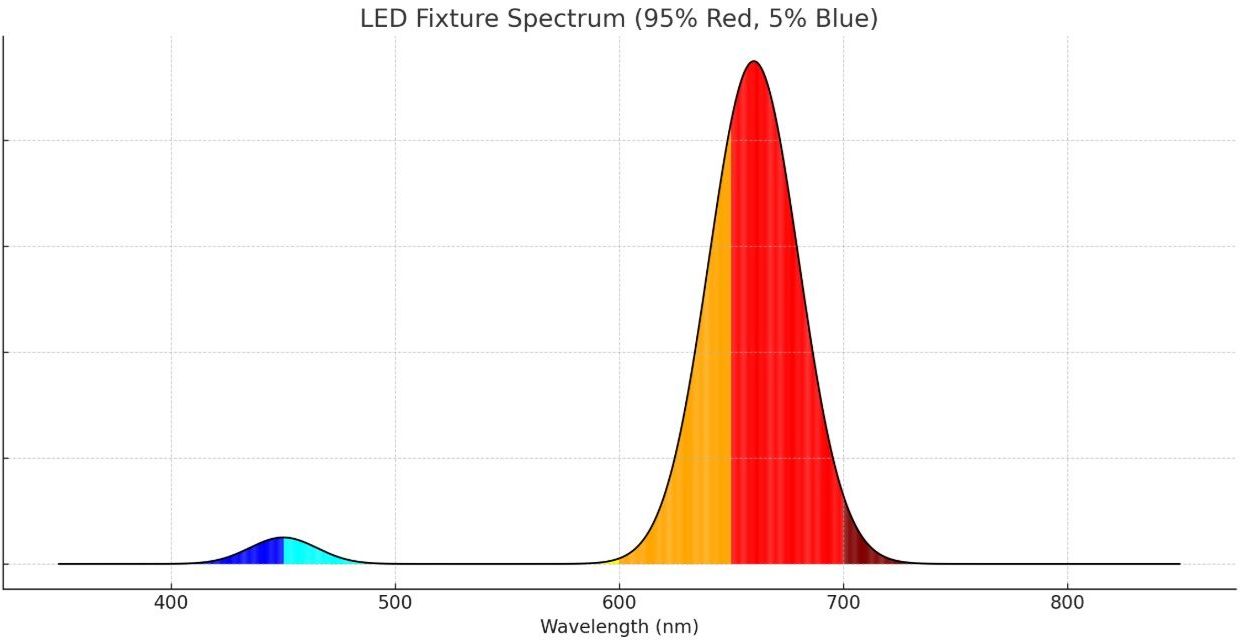
The spectrum displayed on the left represents a horticultural LED fixture dominated by 95% red and 5% blue light, precisely measured using the SpecGrow PAR+ sensor.
With a dominant peak at 660 nm (red) and a smaller peak around 450 nm (blue).
This spectrum shows the output of a LED fixture composed of red (660 nm), blue (450 nm), and far-red (735 nm) light, as measured by the SpecGrow PAR+ sensor. The addition of far-red light extends beyond traditional PAR, offering added value for flowering and elongation studies.
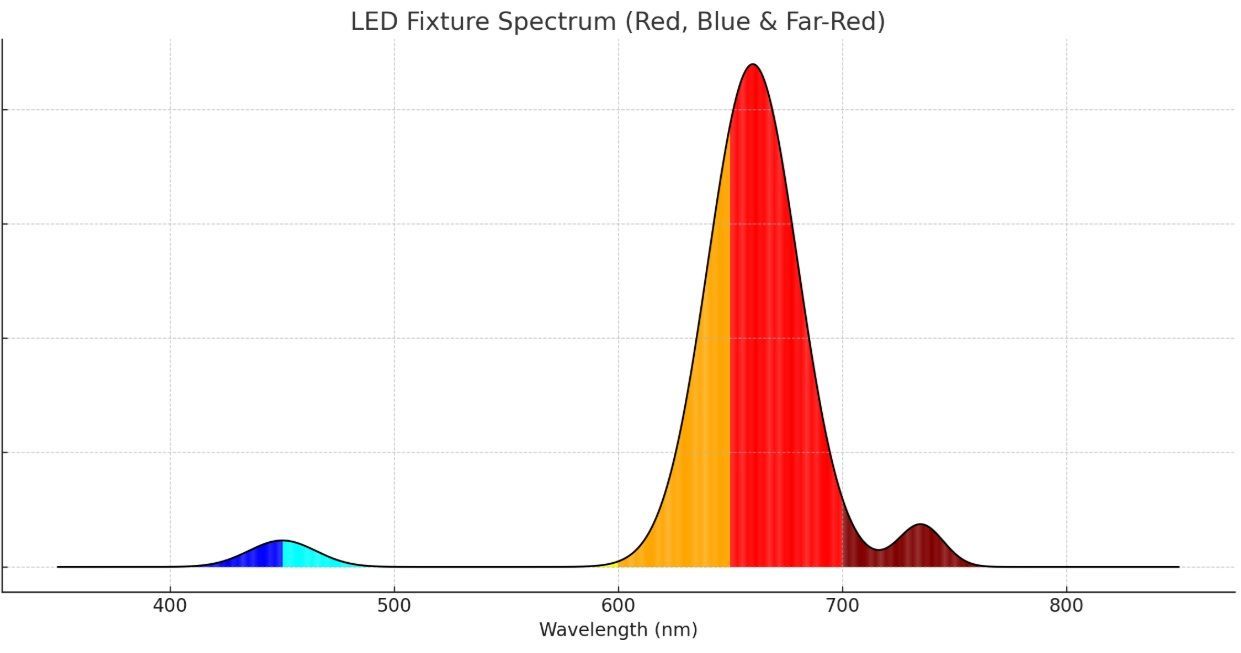
FAQ How to use?
What is the main function of this spectrophotometer?
To measure light in the greenhouse and give detailed information about the composition of the light.
For which environment is this sensor devloped?
For Outside, Vertical farm, Greenhouse and Research enviorment.
Can the spectrophotometer be used to optimize light spectra for LED systems?
Yes, by measuring light in real time also the LEDs can be controlled in real time.
Can the spectrophotometer be used to optimize Day Light Integral (DLI)?
Yes, the sensor can not only measure the DLI for the PAR spectrum but can also measure DLI per spectra group.
Can the spectrophotometer be used to monitor light uniformity in the greenhouse?
Yes, by placing multiple sensors in the greenhouse not only the distribution but also spectral composition uniformity can be measured.
Can the spectrophotometer be used to measure light levels at different canopy heights?
Yes, by placing multiple sensors on diffrent hights in the crop the sensor can emasure the spectral composition on each height.
Can the spectrophotometer be used to validate manufacturer specifications of grow lights?
Yes, the sensor is callibrated and can be used to measure the diteriation of LED fixtures over time.
FAQ Technical
What kind of light measurements can it perform (e.g., PAR, full spectrum, UV, NIR)?
Between 350nm and 800nm with a resolution of 5nm.
In which unit is the light measured?
In µmol m-2 s-1 for each 5nm
What is the accuracy and resolution of the light measurements?
Every 5nm so in total 90 datapoints per measurment
How fast can it do a measurement?
The maximum sample time is every 1 second and the integration time of the sensor is 1 milisecond.
How often does it need to be calibrated?
Every 3 years we recommend to callibrate the sensor when used for research purposes and every 5 years for greenhouse applicatons
Is it waterproof or IP-rated for greenhouse conditions?
Yes, the sensor is IP-45
What communication protocols does it use?
Modubs, TCP/IP and MQTT
Can it be used as a direct drop-in replacement for standard PAR sensors in terms of mounting?
Yes, the system can be ordered with a mounting convertion so it can fit the traditional PAR footprint.
Is technical support or calibration service available?
Yes, via your local supplier.
FAQ Data
What communication protocols does it use?
Modubs, TCP/IP and MQTT
Is it compatible with existing infrastructure?
Yes, if one of the communication protocols is used in the infrastructure the sensor can be read out.
How can the data be visualized or exported (e.g., CSV, cloud platforms)?
The data that is produced can be retreived from the sensor and the user can calculated each known indisiss based on the data generated by the sensor.
Does it support data logging?
Yes, it will log op to 10 datapoints in its internall memory.
How fast can it do a measurment?
The maximum sample time is every 1 second and the integration time of the sensor is 1 milisecond.
Does it support real-time feedback to adjust artificial lighting in the greenhouse?
Yes, the sensor can output a vallue every second resulting in a near real time feedback system.
Do you have a question?
We are here to answer all your questions. Don't hesitate to contact our experts to find out everything about photosynthesis, color imaging and everything in between.
What do our clients say?



